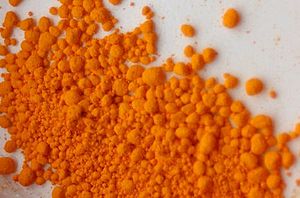Maslama al-Majriti facts for kids
Quick facts for kids
Maslama al-Majriti
|
|
|---|---|
| Born | 950 |
| Died | 1007 (aged 57) |
| Occupation | Muslim Astronomer, Alchemist, Mathematician, Scholar, Economist |
Abu al-Qasim Maslama ibn Ahmad al-Majriti (Arabic: أبو القاسم مسلمة بن أحمد المجريطي) was a very smart scholar who lived a long time ago, from about 950 to 1007. He was born in Madrid, which is now in Spain, during a time when that area was called Islamic Spain.
Maslama was known for many things! He was an astronomer (someone who studies stars and planets), an alchemist (an early form of chemistry), a mathematician, and an economist (someone who studies how money and resources work). He was active during the time of a ruler named Al-Hakam II. His full name was very long: Abu ’l-Qāsim Maslama ibn Aḥmad al-Faraḍī al-Ḥāsib al-Maj̲rīṭī al-Qurṭubī al-Andalusī.
Contents
What Did Maslama al-Majriti Achieve?
Maslama al-Majriti helped translate important books from ancient Greek into Arabic. One of these was Ptolemy's Planisphaerium, which was about how to draw maps of the sky. He also made better versions of other translations, like the Almagest, another big book about astronomy.
He also improved the astronomical tables made by Muhammad ibn Musa al-Khwarizmi. These tables were like guides that helped people know where planets and stars would be in the sky. Maslama also helped historians by creating tables to change dates from the Persian calendar to the Hijri year calendar, which is used in Islam.
Maslama also brought new ways of surveying (measuring land) and triangulation (a way to find distances using angles) to Islamic Spain. He worked closely with his friend Ibn al-Saffar on these methods.
According to a scholar named Said al-Andalusi, Maslama was the best mathematician and astronomer in Islamic Spain during his time. He even wrote a book about taxes and how the economy worked in al-Andalus.
Maslama also edited and changed parts of a very famous collection of writings called the Encyclopedia of the Brethren of Purity when it arrived in al-Andalus.
He also had a big idea about how scientists would share information in the future. He started a special school for Astronomy and Mathematics. This school was the beginning of organized scientific research in Islamic Spain. Some of his famous students included Ibn al-Saffar, Abu al-Salt, and at-Turtushi.
Books Attributed to Maslama
After Maslama al-Majriti passed away, two very important books about alchemy were said to be written by him. However, there's a bit of a mystery! These books were published long after he died. This makes many people think that someone else wrote them but used his name to make them seem more important.
These two books are called "The Sage's Step" (Rutbat al-hakim) and the Picatrix. Both were translated into Latin in 1252 by order of King Alfonso X of Castile. The original Arabic versions were probably written around the middle of the 11th century.
The Rutbat book has recipes for alchemy and instructions on how to make precious metals pure. It was also the first book to talk about an important scientific idea: the conservation of mass. This means that during a chemical change, the total amount of matter stays the same. Maslama (or whoever wrote the book) showed this in a famous experiment with mercury:
I took natural quivering mercury, free from impurity, and placed it in a glass vessel shaped like an egg. This I put inside another vessel like a cooking pot, and set the whole apparatus over an extremely gentle fire. The outer pot was then in such a degree of heat that I could bear my hand upon it. I heated the apparatus day and night for forty days, after which I opened it. I found that the mercury (the original weight of which was a quarter of a pound) had been completely converted into red powder, soft to touch, the weight remaining as it was originally.
This experiment showed that even though the mercury changed form, its weight stayed the same.
The Picatrix book is more about advanced ideas, especially about the stars and special symbols. The author of Picatrix thought this book was for more advanced studies, and sometimes referred to Rutbat as the basic book needed before reading Picatrix.
Did Maslama Have a Daughter?
Some modern books say that Maslama al-Majriti had a daughter named Fátima de Madrid, who was also an astronomer. However, the first time anyone wrote about her was in a big encyclopedia published in the 1920s. So, it's not completely clear if he really had a daughter who was also a famous astronomer.
See also
 In Spanish: Maslama al-Mayriti para niños
In Spanish: Maslama al-Mayriti para niños


